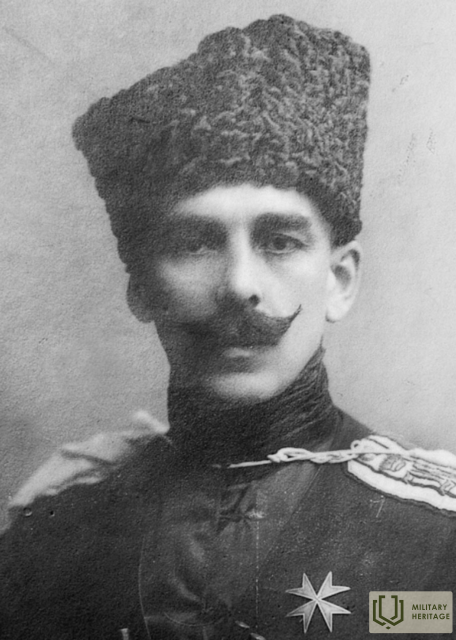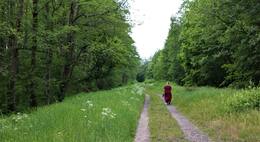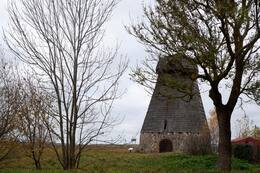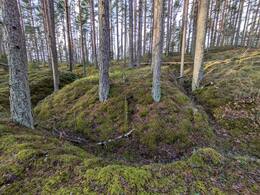Pavel Bermondt-Avalov
I World War I, I Wars of Independence
Commander of the Pro-German Volunteer Army of the West and one of the troops formed. In autumn 1919 he took part in the unsuccessful war against the armies of Latvia, Lithuania and Estonia in the so-called Bermontiada.
On 26 August 1919, Bermont took part in a meeting in Riga of representatives of Latvia, Lithuania, Estonia, Poland, the anti-Bolshevik North-Western Front and the Entente, which sought to coordinate military action against Bolshevik Russia.
On 5 September 1919, he declared himself Commander-in-Chief of the West Russian Volunteer Army and refused to join Yudenich's attack on Petrograd, because he believed (or was forced to believe so by German financial conditions) that it was essential to maintain a Russian army presence in the Baltics.
Armed struggle of the Republic of Latvia against the Western Volunteer Army (RBA) 08.10.-03.12.1919 in the framework of the Latvian War of Independence (1918-1920). The Western Volunteer Army was defeated and left the territory of Latvia in December, evacuating to Germany together with P. Bermont.
After the defeat of the West Russian army, he emigrated to Germany, where he became involved in the Russian National Socialist movement, was one of the leaders of the Russian National Socialist organisation and participated with the German Nazis in the repression of the German communists.
More information sources
Bermontiade - National Encyclopedia (enciklopedija.lv)
Pavel Bermont - National Encyclopedia (enciklopedija.lv)
Bermontiade is widely reflected in Latvian art, literature and cinema. The most famous works are: the novel “Dvēseļu putenis” (Aleksandrs Grīns, 1934), the poem “On the Daugavmala” (Uldis Bērziņš, 1999) and others; paintings “From the Time of Bermont” (Jānis Roberts Tilbergs, 1923), “The Bermont Attack on Riga in 1919 for the Lībek Bridge” (Fricis Zandbergs, 1939), “The Expulsion of Bermont from Pārdaugava” (Jānis Lauva, 1936), the cycle of drawings “Bermontiāde” (Sigismunds Vidbergs, 1926); feature films “Lāčplēsis” (director Aleksandrs Rusteiķis, 1930), “Rīgas sargi” (director Aigars Grauba, 2007), the documentary film “Bermontiāda” (director Askolds Saulītis, 2009) and others.
Related objects
Freedom Trail (Karosta route)
A well-maintained, 9 km long walking trail created to commemorate the bravery and heroism of Latvian men during the Latvian Freedom Struggle in 1919.
The trail starts in Redana and runs through the forest area of Karosta, along the seashore and the Cietokšņa Canal, including a visit to the Tsarist-era fortifications and Soviet-era military heritage. The trail features 5 information boards, which introduce the creation of the Karosta and the fortification system that encircles the entire city, the 1919 Battle of Freedom in Liepāja, the military structures built in later years and life in the Karosta during the Soviet era.
On 18 November 1918, the independent Republic of Latvia was proclaimed, but several foreign troops were still stationed on the territory of the newly established Latvian state.
The Battle of Liepaja in November 1919 played an important role in Latvia's regaining its freedom, when, thanks to the heroism of the soldiers, the enemy was outnumbered almost 5 times. After the decisive battles in Liepaja, Bermont was driven out of Latvia
Radviliškis windmill
An octagonal, 4-story wooden mill stands near the outskirts of the city of Radviliškis, in the village of Vaiduliai.
The Radviliškis windmill was built at the end of the 19th century and restored in 1984-1985. It is said that on November 22, 1919, the famous battle of the Lithuanian Volunteer Army with the Bermontinkai – a provocative Russian military unit – took place near the mill. When the Bermontinkai captured Radviliškis – an important railway junction, Lithuania’s independence was in danger. The 2nd Algirdas Regiment, led by Lieutenant Colonel V. Grigaliūnas-Glovakkis, was entrusted with the task of recapturing Radviliškis.
About 30 Lithuanian soldiers died in the battle, but the fighting ended in a Lithuanian victory. According to volunteers who participated in the fighting, the entire company went out to attack the mill occupied by the Bermontites, the commander armed with a rifle always attacked first, and the others followed his example, so the mill was taken, and the next evening they managed to take over Radviliškis.
To commemorate the 70th anniversary of the battle against the Bermontites, a chapel pole was erected and 70 oak trees were planted near the mill in 1989. The oak grove was supplemented in 2019, to commemorate the 100th anniversary of the battle.
Although there are versions that the battle itself could have taken place a little further away, at another mill, it was the Radviliškis windmill that became the symbol of the battle. Historical reconstructions of the battle have been held at the Radviliškis windmill more than once, in 2010 and 2014. the battle was recreated by reenactors from military history clubs from Lithuania, Estonia, Latvia and Poland.
Nordeķi – Kalnciemas dune ridge
The approximately 30 km long dune ridge, which can be traced in nature from Iļģuciems (with minor interruptions) to Tīreļi today, is one of the most impressive landforms of the Seaside Lowlands, which is rarely perceived as a single natural formation. The dune was formed on the shores of one of the last Baltic glacial lakes, as the waters of the Baltic glacial lake receded. The dune ridge consists of two parallel 50–100 m wide dune belts. They are usually 6–10 m high, but their highest points reach 16–19 m above sea level. In the vicinity of Kleisti, Imanta and Beberbeķi, the beautiful pine forests covering the dunes are a popular place for walking, recreation and sports, and in winter - cross-country skiing. The part of the dune in the vicinity of Lāčupīte is associated with the events of the Bermontiades. On the dune in Pārdaugava is the Lāčupe or Lācaras cemetery . Between Pinkie and Babīte, the Beberbeķi Nature Park has been established to preserve the dunes. The western part of the Nordeķi-Kalnciemas dune ridge, approximately 10 km long, is called the Long Dune . Near the Long Dune (south of Trenči) is the Antiņi Brothers Cemetery , the Latvian Riflemen's Hospital medicine warehouse , and the renovated Latvian Riflemen's dugouts . South of the Long Dune is a massif of swampy forests and marshes, including Rāvājs and Maztīrelis . Opposite Maztīrelis is Ložmetējkalns with a viewing tower and a resting place and the so-called German rampart section . Even further west, near the Long Dune are the Latvian Riflemen Brothers Cemetery and the Piķi Brothers Cemetery. With greater or lesser interruptions, trenches are visible almost along the entire Nordeķi-Kalnciemas dune ridge. In the southwestern part of the Long Dune – in the swampy forests that adjoin it from the south, bomb craters from the First World War are visible. Along the entire length of the Long Dune (south of it), small forest paths run, suitable for walks and longer hikes – a great opportunity to explore the sites of the First World War battles.
Memorial stone for Artūrs Köler, Cavalier of the Lāčplēsis War Order
The memorial stone was unveiled on November 21, 2009, on the 90th anniversary of the liberation of Jelgava. The memorial stone is dedicated to Captain (later Lieutenant Colonel) Artūrs Kēlers, Cavalier of the Lāčplēsis War Order, who commanded the Latvian Army units that attacked the city from the Kalnciem side during the Jelgava liberation operation.
In 1919, when Riga had already been liberated from the Bermontites, on November 21, fierce battles with enemy units took place on the outskirts of Jelgava.
The order for awarding the Lāčplēsis War Order states that on November 20, 1919, near Jelgava, Kēlers, "personally leading a battle group consisting of 6 companies, under heavy enemy fire occupied the line Ciemale-Dūmiņi-Sabraki-Vilkubūdas, took prisoners and obtained 6 machine guns; the next day, in a persistent attack, he occupied the Red Inn and the Meiji Manor, finally breaking the enemy's resistance and greatly contributing to the liberation of Jelgava."
Related stories
Reasons for awarding the award to Commander of the Armoured Train A.Klestrov
After successfully repelling an enemy attack, the commander of the armed train A.Klestrov falls and Colonel Danker issued the grounds for the award
Description of the combat activity of Vilis Narkevics on 6 November 1919
Description of the combat activity of the commander of the detachment, Lieutenant Commander Julius Rosenthal Vilis Narkevics, 3 November 1921










